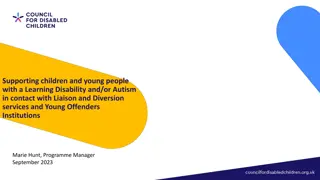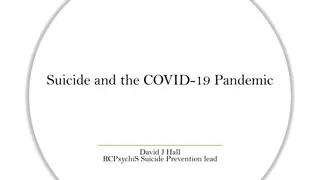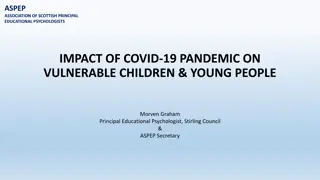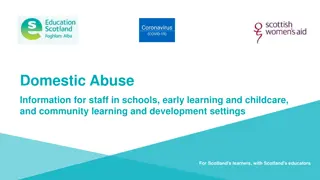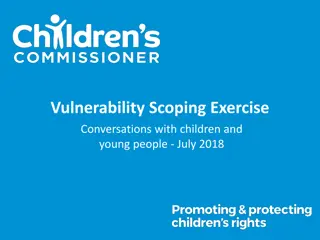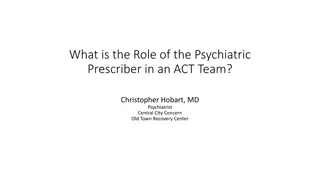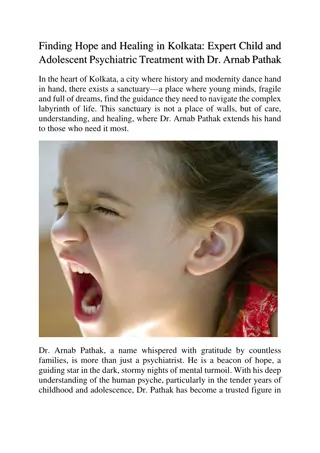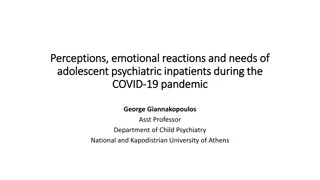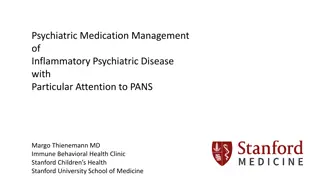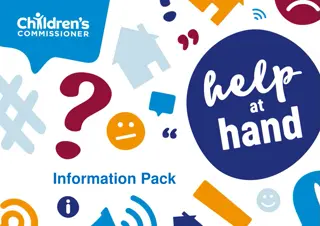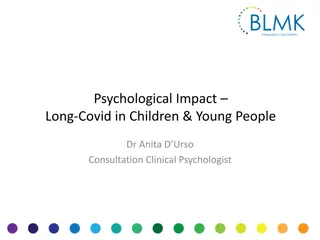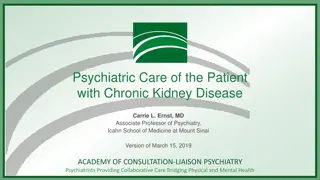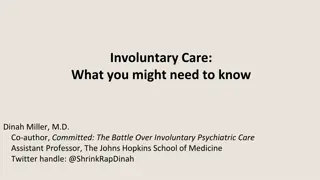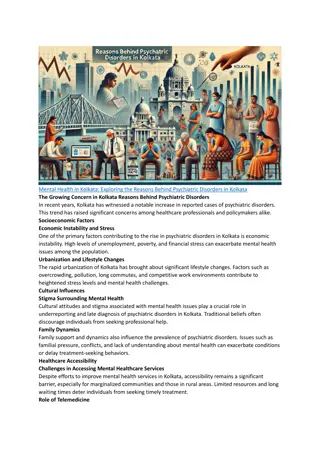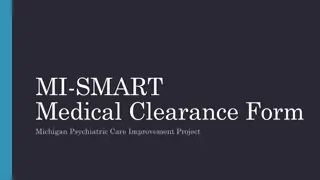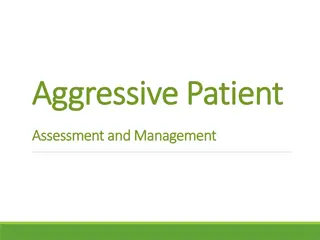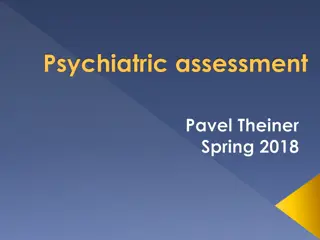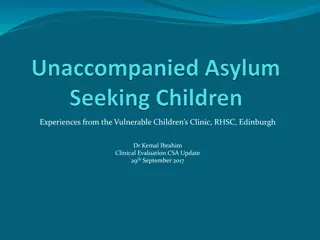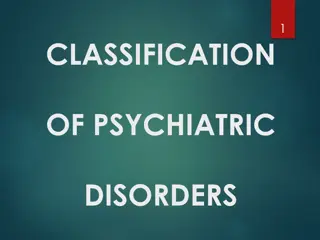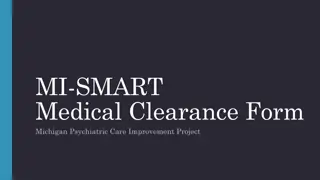Impact of the Pandemic on Vulnerable Children & Young People: Insights from a Psychiatric Perspective
Vulnerable children and young people, especially those with learning disabilities, have been significantly impacted by the pandemic. Issues such as mental health inequalities, limited access to specialized services, and adverse childhood experiences are exacerbated, highlighting the urgent need for enhanced support and resources in this area.
Download Presentation

Please find below an Image/Link to download the presentation.
The content on the website is provided AS IS for your information and personal use only. It may not be sold, licensed, or shared on other websites without obtaining consent from the author. Download presentation by click this link. If you encounter any issues during the download, it is possible that the publisher has removed the file from their server.
E N D
Presentation Transcript
Impact of the Pandemic on Vulnerable Children & Young People DR SUSIE GIBBS CONSULTANT PSYCHIATRIST LD CAMHS
Experiences of pandemic RCPsych response to Vulnerable Children Inquiry https://i.emlfiles4.com/cmpdoc/9/5/5/6/7/1/files/48564_rcpsyc his_education-committee-response---vulnerable-children_- 140520.pdf?dm_i=3S8F,14TE6,2K3TPG,3ZYHW,1 Consultation with faculty members, LD CAMHS Scotland Network, families, multiagency colleagues Back to school similar consultation
Mental health of children & young people with learning disability
Children and young people with LD/ID 1-3% of children and young people have learning disability/intellectual disability Significant, lifelong condition; reduced ability to understand new or complex information or to learn new skills; reduced ability to cope independently; starting before adulthood with a lasting effect on the individual s development. Communication difficulties, sensory impairment, physical and neuropsychiatric co-morbidities.
Children and young people with LD/ID High rates of adverse childhood experiences, poverty and being looked after/in care, often far from home Mental & physical health inequality: Overall 40% mental ill-health, 30% persistent mental ill-health. Rates increase with severity of LD Death in childhood 12 times higher, & include amenable deaths doi: 10.1136/bmjopen-2019-034077
Scottish mental health services for children and young people with LD Low baseline of services pre-covid Patchy/variable community services LD CAMHS Framework Document 2011: https://www.gov.scot/publications/ld-camhs-inpatient-report/pages/12/ No specialist inpatient unit, no access to inpatient care for some: https://www.gov.scot/publications/ld-camhs-inpatient-report/pages/3/ Greater awareness, included in CAMHS service spec: https://www.gov.scot/publications/child-adolescent-mental-health-services- camhs-nhs-scotland-national-service-specification/
Scottish mental health services for children and young people with LD Little progress on ground - gap widening not increased in line with MH/wellbing provision for non-LD peers, including: Additional CAMHS clinicians Parenting programmes School counselling Important that Community Mental Health & Wellbeing Supports and Services Framework is implemented to include CYP with LD Low baseline so hard to step up provision at time of crisis
Impacts of the Pandemic
Fear Fears of children/young people: The illness Difficulty understanding Fears of families: Food supplies Risks of covid Would their children be excluded from treatment? Who would call for help if parent ill? Managing without services Children not managing social distancing, keeping them in
Rapid impact on mental health & behaviour High daily care needs huge pressure on families Already at limits of managing Our children and young people rely on familiarity & routine CHANGE Problems understanding Express distress through behaviour increase in severe agitation, self-injury, aggression Further exacerbates pressure on exhausted families
Education & care supports Difficult decisions, unprecedented situation Highly variable but overall very limited & very part time, even where significant MH issues e.g. < of those with highly complex MH needs on specialist caseloads in 1 HB had any time at hubs Usually a few hours 1 or 2 days a week Placement not starting or stopping due to risky behaviours (aggression, spitting etc)
Education & care supports Limited uptake as unsuitable/anxious about virus Very good phone contact from schools Most respite stopped/severely limited Emergency respite in extreme cases Delayed transitions
Family resilience Very understanding Grateful for even very limited support Very resilient New understanding Parents working together Calmer patch once CYP settled into new normal But increasing parental exhaustion & bored children Fear of transition back to school
Inequality Isolation Digital exclusion Inequality of access (for clinical contact as well as education) What don t we see? Children & young people who can t call for help
Family Fund Survey families of disabled or seriously ill children Negative effect on children s: health & wellbeing (94%); behaviour & emotions (89%); mental health (82%) 65% reduced access to formal services, including MH 30% struggled to afford food, 24% missed meals in last 2 weeks no savings to fall back on Biggest concerns: educating/entertaining child at home; health & wellbeing https://www.familyfund.org.uk/news/health-and-wellbeing-of- disabled-children-at-risk-under-pandemic-as-government- announces-extra-10-million-funding-for-children-with-complex-needs
Child LD mental health services Behavioural/parenting advice hard for parents to implement: Exhaustion/stress Lack of hands on support Video appointments: Hugely valued initially Time efficient for families & clinicians Less stressful than home visits for some CYP We don t know what we are missing
Child LD mental health services Higher rates of crisis calls & requests for medication to manage distressed behaviour rather than treat mental ill-health Ethical concern Ensuring physical health assessed/managed Harder to monitor medication safely Increased prescribing for anxiety (loss of routine) Increased prescribing in absence of other interventions Delays in treating/changing treatment in less urgent cases
Child LD Mental health services Variable Quick switch to remote working Focus on priority cases Multiagency approach to identify crisis list Risk/benefit of use of services Highlighting serious concerns Waiting lists stacking up for others Families waiting now coming through in crisis
Child LD Mental health services good practice examples LD specific covid information: On websites Email distribution Info-sharing with families (e.g. allowed more time outside) But practical support really what was needed Only one dedicated LD CAMHS ITS in Scotland Some involvement from CAMHS ITS/inpatient units
Child LD Mental health services good practice examples LD CAMHS ITS: In homes to support management of severe aggression & destruction Integrated work with school, SW, use of medication Virtual team working Modelling in home, helping implement strategies & routine Parents seeing impact of strategies so more confident to use them
Young peoples participation representative for Aberlour views from 5 young people How do you feel about being back at school? All happy; 2 had really missed it; difficult not being there What has been helpful in getting you back to school? Seeing & being friends; routine; helping with common sense and learning; staff helping to settle; taking a comforter; liking the teacher; knowing what to expect What has been unhelpful? Catching bugs, new rules: sanitizing, masks, not sure that people realise how difficult this can be; not having paper is very hard; getting up in morning
LD CAMHS clinician reports Better than expected Good planning by schools, some gradual introductions back Those where loss of structure and routine was contributory settled quickly reflects the need Signs of low mood/regression quickly improving Some really struggling, especially where very limited/no support when off, where school anxiety provoking, transitions difficult, autism Many going off with physical health issues
Key points Starting at disadvantage need to build up services Lots of advice, phone support, on-line advice Immediate impact shows importance of practical support (scaffolding) Distress shown through behaviour Escalation due to lockdown situation & now longer waits for intervention Safety/ethics of use of psychiatric medication Widening inequality; children can t call for help Impact on parents & siblings
Additional References/links https://www.scld.org.uk/the-impact-of-coronavirus-on-people-with- learning-disabilities/ https://www.bbc.co.uk/iplayer/episode/m000m40k/disclosure- series-2-14-locked-down-and-shut-out https://scottishtransitions.org.uk/survey-results-views-of-parents- and-carers-on-the-impact-of-covid-19-on-transition-planning-for- young-people-aged-14-18-with-additional-support-needs/ https://cypcs.org.uk/wpcypcs/wp- content/uploads/2020/07/independent-cria.pdf https://councilfordisabledchildren.org.uk/sites/default/files/field/at tachemnt/Lenehan_Review_Report.pdf
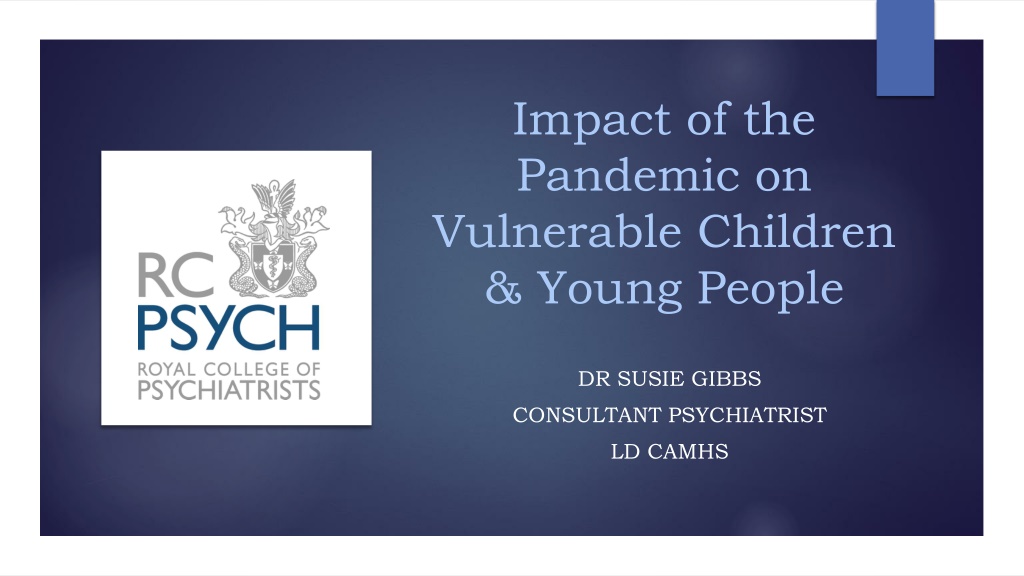
 undefined
undefined






